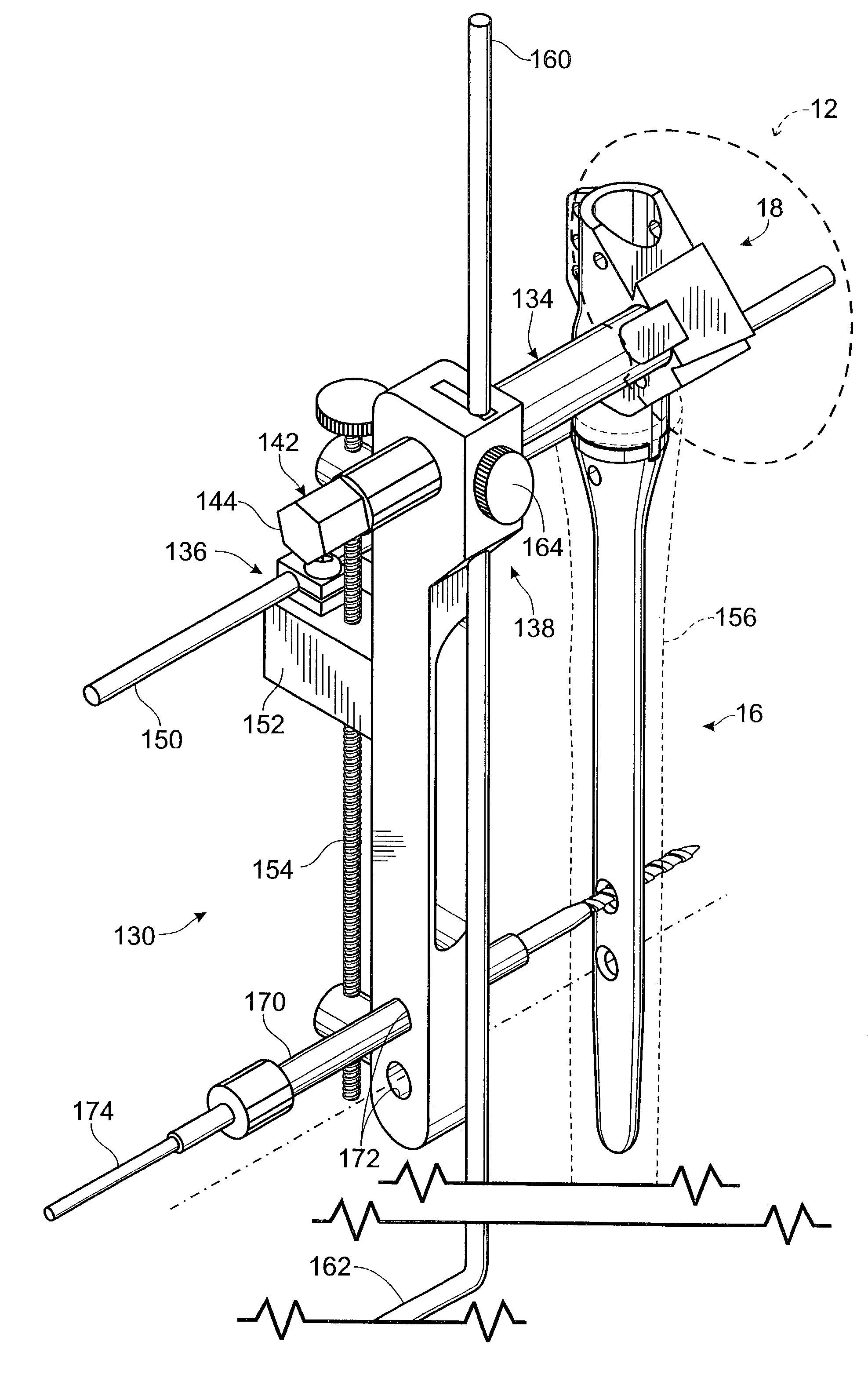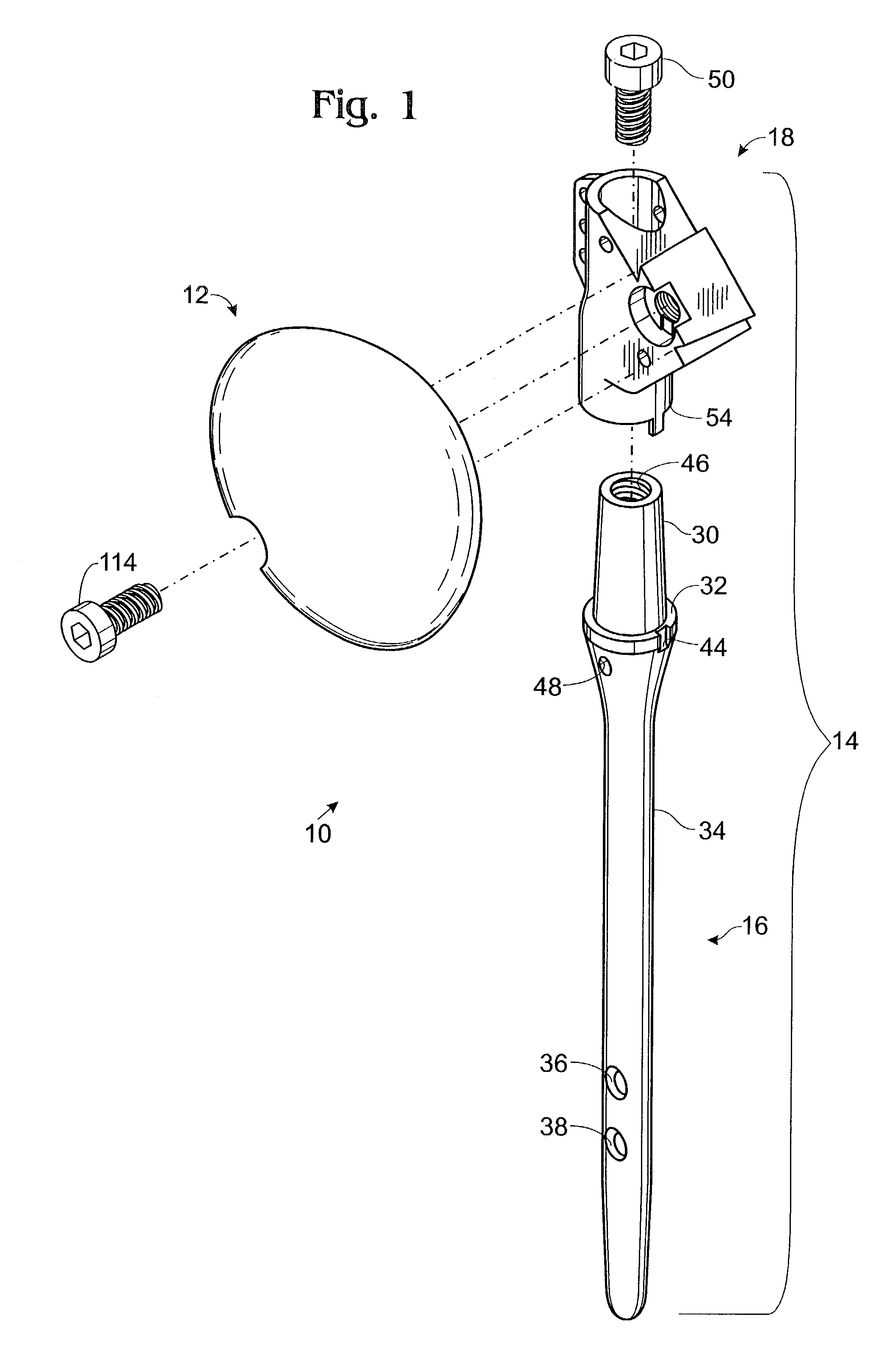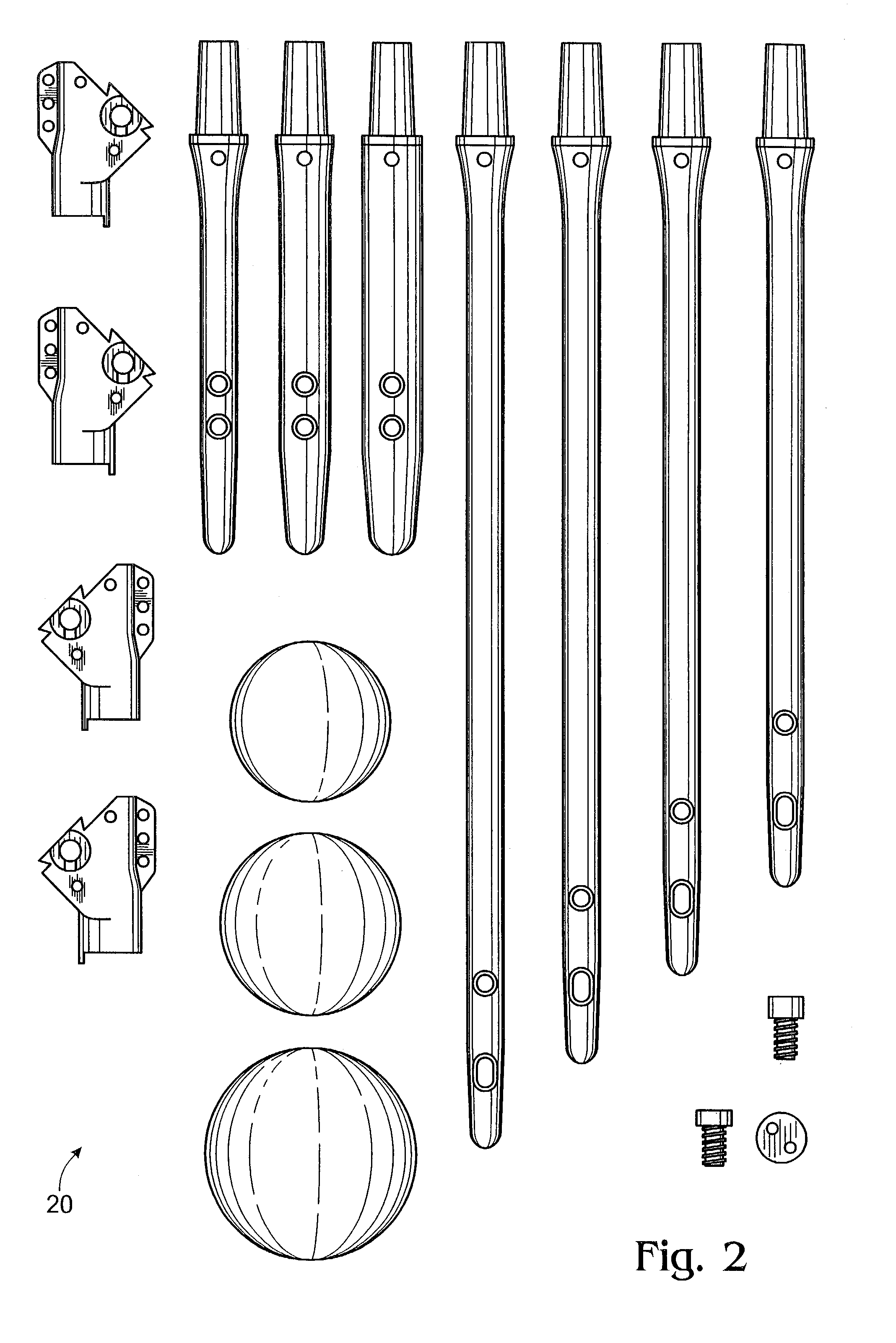Shoulder prosthesis
a shoulder and hip technology, applied in the field of bone prosthesis, can solve the problems of inability to adjust, and difficulty in obtaining a large number of devices, and the success of shoulder implants is less common than the common problem of hip replacement, so as to achieve the effect of reducing the number of devices and reducing the cost of stocking the large number of devices
- Summary
- Abstract
- Description
- Claims
- Application Information
AI Technical Summary
Benefits of technology
Problems solved by technology
Method used
Image
Examples
Embodiment Construction
[0035]A shoulder implant constructed according to the present invention is shown generally at 10 in FIG. 1. Implant 10 includes a head 12 and a stem 14. The stem preferably includes a distal shaft 16 and a body 18. The components making up implant 10 are preferably chosen from a kit 20 of interchangeable shafts, bodies and heads, as shown in FIG. 2. By selecting an appropriate shaft, body and head from kit 20, a surgeon is able to create an implant that is sized properly for almost any patient. Positional references such as anterior / posterior, medial / lateral and proximal / distal used herein are made with reference to an implant as it would be positioned in a patient.
[0036]Shaft 16 is shown in greater detail in FIG. 3 and includes a proximal tapered end 30 extending distally to a shoulder 32 which tapers smoothly into a cylindrical medial region 34 with distal locking holes 36, 38. As can be seen in FIG. 2, the shaft can have a medial region of varying diameter and / or varying length. ...
PUM
 Login to View More
Login to View More Abstract
Description
Claims
Application Information
 Login to View More
Login to View More - R&D
- Intellectual Property
- Life Sciences
- Materials
- Tech Scout
- Unparalleled Data Quality
- Higher Quality Content
- 60% Fewer Hallucinations
Browse by: Latest US Patents, China's latest patents, Technical Efficacy Thesaurus, Application Domain, Technology Topic, Popular Technical Reports.
© 2025 PatSnap. All rights reserved.Legal|Privacy policy|Modern Slavery Act Transparency Statement|Sitemap|About US| Contact US: help@patsnap.com



